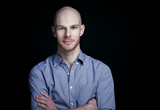 My second day in South Sudan, the start of a nine month posting with MSF in this war torn, dustbowl of a town called Nasir, and I’m standing here in the medical ward, utterly lost. In every sense of the word.
My second day in South Sudan, the start of a nine month posting with MSF in this war torn, dustbowl of a town called Nasir, and I’m standing here in the medical ward, utterly lost. In every sense of the word.
How did previous doctors manage the workload out here? I’ve got no idea. In the past hour I’ve been called from the ward a handful of times. First was to the tuberculosis (TB) village, the group of mud huts behind the hospital, where forty TB patients live for the six month duration of their therapy, to talk with a man who is unhappy with the quantity of food he is being given and to try to persuade him not to leave. Next was to our living compound, where our logistician, Paul, is suffering from his second case of gastro this week (it won’t be long until I join the ranks, he assures me), followed by a visit to the re-feeding centre, where the health worker wanted me to please assist with the feeding of a malnourished, but surprisingly feisty young girl. The patch of high energy milk on the front of my T-shirt proves that I tried. And more recently there was the call to outpatients, where dozens of patients are waiting to be seen, crowding under the awning in a vain attempt to avoid this diabolical heat. Fifty degree afternoons are not unheard of here, I’m told. The local word for February, the month just passed, is simply “Fire.”
Back to the ward round. I see another patient, struggle with interpreters, and thumb through my handbook of tropical medicine. It’s now only ten am, but the sweat is pouring off me. I’ve got no idea how people cope with fevers in this heat, yet almost all of our patients suffer with them. The cases seen so far, on just one side of our thirty bed medical ward: brucellosis—a disease likely contracted from the consumption of unpasteurised milk; HIV/AIDS, with extensive skin lesions; Kala Azar, requiring blood transfusions; a severe reversal reaction following the commencement of leprosy treatment; and the numerous cases of chest infections, diarrhoea, and malaria that together account for almost all paediatric presentations. And then there’s the surgical ward next door—another world entirely. There, victims of the ongoing clan fighting, many of whom are young men with gunshot injuries to their limbs, lie confined to traction for several weeks—traction here being created by connecting several bricks, via a length of rope, to a pin drilled through the affected limb. (Why so many limb injuries? Nature does the triaging here, explained our surgeon: those with more immediately life threatening injuries die before they get to us.)
So, nine months of this to go. I’ve got a team of ten expats for company and a stuffy, remarkably unusual smelling mud hut to call home; two bats snoozing upside down from our living room roof to stare at during lunch; a crashed plane at the end of the dirt airstrip to remind me not to wish for holidays too soon; groups of bare chested, heavily armed men roaming around town to remind me of the stakes; and a workplace in which I’m very obviously needed albeit thoroughly out of my depth. It’s a desolate, fascinating, foreboding place, this town. I’m utterly entranced by it.
And intimidated.
Competing interests: “I declare that that I have read and understood the BMJ Group policy on declaration of interests and I have no relevant interests to declare.”
Damien Brown is a 36-year old doctor from Melbourne, who has worked with Medecins Sans Frontieres (Doctors Without Borders) in several African countries. More recently he has been based in Aboriginal communities in the Northern Territory of Australia. After his last overseas posting, both inspired and frustrated by what he’d seen, Damien took time off from medical practice to write about his experiences. The resulting book, “Band Aid for a Broken Leg: Being a Doctor With No Borders, and Other Ways to Stay Single,” was published by Allen & Unwin earlier this year in the UK. Damien is currently based in London, completing a Masters of International Health.